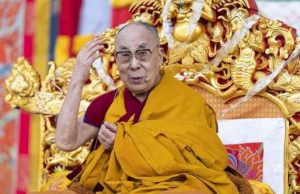Buddhism and Daoism have historically competed for influence in China, resulting in a complex, mutually enriching relationship between the two traditions. The interaction between Buddhism and Daoism is often lauded as a unique hallmark of China’s religious and philosophical history. Each tradition has had a substantial impact on the other, resulting in a partial synthesis, dialogue, and absorption of concepts and practices. This interaction has endured for more than two millennia and, with the resurgence of interest in spirituality in China, is more relevant than ever.
Since Daoism is one of China’s few major “homegrown” spiritual traditions, I hope to explore here the historical context of this interaction and exactly what major philosophical and ideological concepts were exchanged and synchronized.
Historical Background
From a critical-historical perspective, Daoism can trace its core ideas to the Zhou dynasty (1050–221 BCE). It even possesses folkloric aspects that could be traced to prehistoric China, when shamanic and mythically knowledgeable magicians tapped into the power of ancestral spirits and cosmic, natural energies to understand fate and divine the future. The semi-legendary founder Laozi was a contemporary of Confucius. Its core text, the Daode Jing, was compiled by the third century BCE, and the oldest extant versions, the Guodian Laozi unearthed at Jingmen, Hubei Province in 1993, and the Daode Jing manuscripts of Mawangdui, unearthed in 1973, date to around 300 BCE and the second century BCE, respectively.
The informal following that Laozi founded emerged as a philosophical and religious movement (complete with the name “daojia”) at the turn of the Common Era, during the Han dynasty (202 BCE–9 CE, 25–220 CE). It incorporated the teachings of the I Ching, the School of Naturalists (yin-yangjia), and teachings from successor texts to the Daode Jing, such as the Zhuangzi. Meanwhile, Buddhism was founded around 2,600 years ago in India and arrived in the Han court, with one of the earliest foreign missionaries being people such as the Parthian An Shigao (fl. c. 148–80 CE). This meant that Daoism and Buddhism interacted for the first time at around the same period they were emerging as formal bodies of religious practice that were distinct from old systems of folk religion or ancestor worship.
Buddhism’s popularity among the Chinese literati and imperial court grew rapidly, but part of its attraction was due to the practical translation habits of Chinese and foreign monks—many of the religions’ terms and vocabulary were equated with each other for the sake of conceptual clarity. Some even thought that Buddhism was a non-Sinitic expression of Daoism. An example of the Buddhist terms that were equated with Daoism is wu, which can be translated as “nothingness”, “emptiness”, or “non-being.” Buddhist and Daoist interpreters and writers equated it with kong (Sanskrit: shunyata), which refers to the idea that all phenomena are empty of inherent existence, and can be translated as “emptiness” or “voidness.”
Over the centuries, from the collapse of the Han all the way to the Sui dynasty (581–618), there was an increasing sense among Chinese Buddhists that they did not quite have the doctrine right, and even as Daoism went from strength to strength, there arose the need to go to the original source of teachings. This “philosophical decoupling” of Buddhism and Daoism culminated in the travels of Chinese pilgrims to India during the Tang dynasty (618–907). These pilgrims, including Xuanzang and Yijing, traveled to India to study Buddhism and bring the Buddhist teachings and texts back to China. John R. McRae argues that these Chinese pilgrims played a crucial role in the spread of Buddhism in China and that their travels also contributed to the emergence of a genuine dialogue between Buddhism and Daoism as separate religions with differing doctrines. (McRae 2003, 21–27)
Throughout their travels, the Chinese monk-pilgrims encountered a diversity of Buddhist teachings and practices that they took back to China and shared with Buddhists and Daoists. Xuanzang is reknowned for his Chinese translations of numerous Buddhist texts, including the Heart Sutra and the Diamond Sutra. These translations helped to introduce Chinese readers and scholars to novel Buddhist concepts and ideas. Moreover, the Buddhist teachings encountered by pilgrims in India were frequently influential. For instance, Yijing’s travel narratives disclose his respect for the monastic discipline and meditation techniques of the Indian Buddhists he encountered. (Tansen 2006)
Philosophical concepts
Buddhism and Daoism share a number of concepts that enjoy philosophical affinity, despite their distinct origins. Both traditions emphasize the importance of attaining enlightenment or spiritual liberation. However, their respective cosmologies and the nature of this purported enlightenment or liberation are different.
For instance, both the Daoist concept of the Dao and the Buddhist concept of the Dharma emphasize the importance of understanding the nature of reality in order to obtain spiritual liberation. (Wright 1959, 36) According to Chad Hansen, the Daoist view of the universe is that it is a process of change governed by the Dao, the Way of Nature, which is the fundamental principle underlying reality, and a central tenet of Daoism is living in harmony with it. (Hansen 2000, 105) Buddhism similarly emphasizes the significance of understanding the truth of reality in order to attain spiritual liberation. However, Buddhism emphasizes the importance of the Four Noble Truths and the Noble Eightfold Path, which lead to enlightenment. (Bhikkhu Bodhi 2010, 25–29)
In addition, the concept of non-action (wuwei) in Daoism and the Middle Way (zhongdao) in Buddhism are important concepts that link Daoism and Buddhism. Laozi and future Daoist writers defined wuwei as acting in harmony with the natural course of the universe, without striving or imposing, while the Buddha taught as a core principle the Middle Way. While the Noble Eightfold Path is a uniquely Buddhist schema, the Middle Way principle of avoiding extreme perspectives and actions (Bhikkhu Bodhi 2010, 13) is very much in line with the ideal of unforced living. Both the Middle Way and wuwei advocate moderation in one’s actions and beliefs, attuning one another to a natural way of life aligned with reality or the law of the universe: the Dharma or the Dao.
Religious practices
Beyond slightly academic discussions about doctrinal differences, Chinese religious practices have no doubt been influenced by the interaction between Buddhism and Daoism. Even today, many Chinese adhere to “both” Buddhism and Daoism in the sense that their religious practices often combine elements of both traditions. Phenomenologically, scholars and researchers have found that it is not easy to identify where one ends and the other begins.
Down the centuries, Daoist philosophers have incorporated Buddhist practices such as meditation, into the corpus of Daoist philosophy. Buddhist philosophers have similarly been inspired by Daoist concepts such as the significance of nature and the unity of polarities, integrating these ideas into their own philosophical schools.
Ancestor worship is another of these primary practices and an integral part of traditional Chinese religion. It is believed that progenitors can influence the lives of their descendants, and they are frequently honored with rituals and gifts. China’s ancestor worship is influenced by both Buddhism and Daoism. It is asserted that Daoism emphasizes the natural world and the connection between the living and the deceased, whereas Buddhism emphasizes karma and the idea that actions in this life can have consequences in future lives. (Teiser 1988, 3–25) Buddhism’s ingenuity was to take the ancestral worldview that, on the surface, was opposed to core Buddhist ideas such as rebirth and no-self (anatta), and harmonize it so that Buddhism remained relevant to Chinese devotees’ inherited spiritual needs.
The interaction between Buddhism and Daoism in China is perhaps the most well-known example of Chinese religious development. It has been notoriously difficult to classify for Western-trained philosophers and historians of religion, with different periods being variously called “syncretism,” “exclusivism,” and varying degrees of pluralism. What is clear is that these were distinct concepts competing for influence and resulting in new ideas and practices that ended up enriching both religions. It is this mutual influence or “coming together” that has perhaps left a more significant legacy on Chinese religion today than Buddhism or Daoism might have had on their own.
References
Bhikkhu Bodhi. 2010. The Noble Eightfold Path. Colombo: Buddhist Publication Society.
Hansen, Chad. 2000. A Daoist Theory of Chinese Thought: A Philosophical Interpretation. Oxford: Oxford University Press.
Laozi. 2009. Lao Tzu: Tao Te Ching. Translated by Ursula K. Le Guin and Todd Barton. Boulder, CO: Shambhala Publications.
McRae, John R. 2003. Seeing through Zen: Encounter, Transformation, and Genealogy in Chinese Chan Buddhism. Berkeley: University of California Press.
Teiser, Stephen F. 1988. The Ghost Festival in Medieval China. Princeton: Princeton University Press.
Wright, Arthur F. 1971. Buddhism in Chinese History. Stanford: Stanford University Press.
See more
Anxious and stressed about their careers, young Chinese are flocking to temples (South China Morning Post)
Xuanzang (Resources for East Asian Language and Thought)
The Travel Records of Chinese Pilgrims Faxian, Xuanzang, and Yijing: Sources for Cross-Cultural Encounters between Ancient China and Ancient India (Association for Asian Studies)
Related features from BDG
The Secret of the Golden Flower, Part One
The Secret of the Golden Flower, Part Two
Book Review – China Root: Taoism, Chan, and Original Zen













